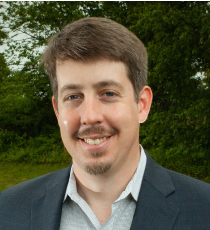
CREDIT FOR ATTENDANCE:
- 1.00 Technical CEC by the New Jersey Site Remediation Professional Licensing Board
- 1.00 Professional Development Hour (PDH)*
Please choose the "With Certificate" option in the checkout in order to receive a downloadable certificate as proof of attendance. If you register for this course at the “No Certificate” rate, you are not eligible to receive a certificate at a later date.
DESCRIPTION:
- 1 hour
Our one-hour course is designed for industry colleagues, professionals, and clients who are interested in learning more about borehole geophysics. Students will learn what borehole geophysical logging is, its role in the development and refinement of a conceptual site model (CSM), and the applications of different tools in environmental site remediation. The material serves to advance the technical knowledge of the attendees by tackling issues concerning bedding attitude assessment, lithology of bedrock and unconsolidated deposits, borehole deviation, cross flow hydraulics in a borehole, and location and transmissivities of water-bearing fractures in a well. The instructors aim to help the attendees think about the challenges they face and the potential advantage of borehole geophysics on their sites. Borehole geophysics can serve to update a CSM to reflect the current state of scientific knowledge, professional practice, and regulatory guidance.
*Please note: PDH’s may be considered as qualifying continuing education credit for Professional Engineering, Geology and Land Surveying licensure in New York State in accordance with NYSED Commissioner’s Regulations Section 68.14 (i)(2)(iii). The licensee is responsible to ensure that the course material contributes to professional practice in engineering, land surveying, and/or geology as such practice is defined in sections 7201, 7203 and 7204-a of Education law.
OVERVIEW
Lesson 1 – Introduction to Borehole Geophysical Logging
- What is borehole geophysical logging?
- Definition
- Background
- General utility and limitations
Lesson 2 - Methods and Applications
- Which difficult problems can it help environmental consultants solve?
- Conceptual Site Model development, review and refinement
- Fractured bedrock and unconsolidated examples
- Lines of evidence for LSRP exercise of independent professional judgment
Lesson 3 – Log Interpretation
- What each method measures
- Interpretation – independent and synergistic
Lesson 4 – Using Logging Data
- Correlated logs
- Flow meters, cross-flow, and multiple wells
Lesson 5 – Final Thoughts
- Project Workflow
- Additional Resources
You must log in and have started this course to submit a review.





